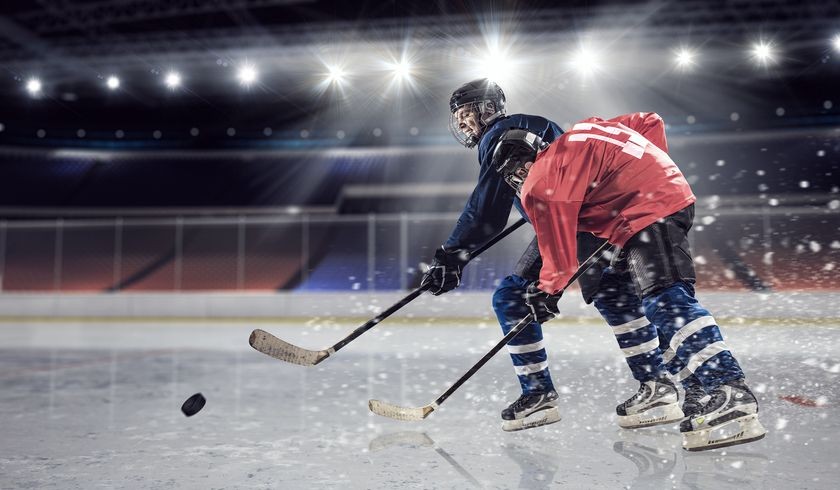
January 2018 is National Winter Sports TBI Awareness Month

Winter sports are a great way to have fun and stay in shape. Flying down the ski slopes at 25+ miles per hour or shredding the terrain on a snowboard at more than 20 mph is certainly exhilarating, but it can be dangerous, especially if you hit your head when you crash at those speeds. Hitting your head can result in a traumatic brain injury (TBI), which can disrupt brain function.
In 2009, emergency departments in the United States treated 16,948 patients for head injuries sustained during the winter sports of skiing, sledding, snowboarding and snowmobiling, according to the American Association of Neurological Surgeons. As National Winter Sports TBI Awareness Month, January is a great time to learn about traumatic brain injuries associated with winter sports.
About TBIs and Winter Sports
Your risk for TBI depends largely on the winter sport you play. A 2015 study published in Orthopaedic Journal of Sports Medicine looked at the incidence of head and neck injuries in seven “extreme sports,” which include the winter sports snowboarding, snow skiing, and snowmobiling, along with the summer sports surfing, skateboarding, mountain biking and motocross. They found that, of the winter sports, snowboarding and skiing had the highest number of head and neck injuries while snowmobiling had the lowest.
Of all sports, the most concussions were associated with snowboarding. In fact, snowboarding accounted for about 30 percent of all concussions incurred during extreme sports. Snow skiing accounted for about 25 percent.
Types of TBI
Concussion
A concussion is the most common type of traumatic brain injury. A concussion can occur when an impact or sudden change in momentum or direction causes the brain to shift. The force of the movement can stretch blood vessels in the brain or damage cranial nerves there.
Coup-Contrecoup
This type of injury occurs when the force of the movement is strong enough to cause the brain to slam into the interior of the skull. Coup-Contrecoup causes contusions at the site of impact and on the opposite side of the head, where the brain bumps into the skull.
Contusion
A contusion is a bruise or bleeding on the brain.
Diagnosing TBI
Medical professionals use a variety of tools to diagnose TBI and assess the severity of the injury. These tools include the Glasgow Coma Scale that checks the patient’s ability to move and follow directions, and detailed review of information about the injury and symptoms.
Imaging plays an important role in the diagnosis of TBI, including those brain injuries associated with winter sports.
CT Scan
Computed tomography (CT) is the workhorse of imaging when it comes to TBI; the images can help clinicians identify most traumatic brain injuries. A CT scan uses a series of x-ray images to create a detailed view of the patient’s brain. The scan helps clinicians visualize skull and facial bone fractures, and uncover evidence of bleeding in the brain, contusions, blood clots, and brain tissue swelling. CT scans are helpful for detecting damage associated with TBI in acute cases, when the patient is still in the emergency department.
MRI
Magnetic resonance imaging (MRI) uses radio waves and magnets to create a detailed view of the patient’s brain. Clinicians typically order MRI after stabilizing the patient’s condition.
Treatment for TBI focuses on minimizing secondary injury and life support. Depending on the injury and its severity, treatment may involve rest, medication, or surgery.
Tips to Prevent Traumatic Brain Injury while Playing Winter Sports
As National Winter Sports TBI Awareness Month, January is the perfect time to learn how to prevent traumatic brain injuries while playing winter sports.
Purchase a helmet that fits properly when you wear a hat or cap to keep your head warm. While snow is soft, trees, ice, cement and other people are not soft.
Replace your helmet after a serious fall or head impact, as many helmets can withstand only a single impact. Depending on the severity of the impact, some helmets may be able to withstand more than one impact but the negative effects of even one TBI vastly outweigh the cost of a helmet.
Always wear your helmet during practice and play.
Know your limitations and stay within them. If it is your first time on a ski slope, take lessons from an expert and follow his or her advice when you go out on your own. Learn the fundamentals, start slowly, and be patient.
Supervise children closely as they pay winter sports on snow and ice. Watch for blows to the head and signs of injury. Children under the age of 6 years should never ride on snowmobiles and ATVs; children under the age of 15 should not drive these vehicles.
Familiarize yourself with your surroundings. Assess the trail, skating rink, or sledding hill before you head down them at full speed. Look for sharp turns, blind spots, and sudden knolls or drops.
Avoid crowded areas to reduce your risk of injury if someone has an accident or behaves irresponsibly. When skiing or sledding, stay near the center of the trail to avoid obstacles.
For more information on traumatic brain injury during National Winter Sports TBI Awareness Month, consult with your doctor. Your local emergency department may also be able to provide information.




